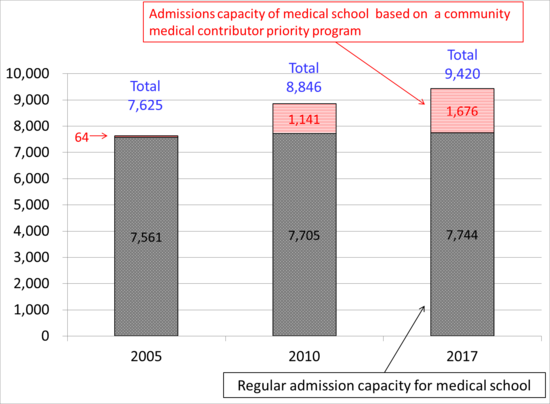Column Finance and the Social Security System 2019.06.17
【Aging, safety net and fiscal crisis in Japan】No.200: A community medical contributor priority program accounts for the majority of increases in medical school capacities.
As shown in Figure 1, the admission numbers for medical schools increased from 7,625 in 2005 to 9,420 in 2017. As indicated by Column No.11, Japan appears to be on track for a society in which 1 in 100 people will become medical doctors, especially as it is projected that the 18-year-old population will be fewer than 1 million by 2035.
Despite this growing number of doctors, prefectures responsible for the governance of the regional healthcare delivery system are constantly claiming of a shortage of doctors. Prefectures have asked medical schools in their regions to set up a framework for a community medical contributor priority program as a means to compensate for this shortage. Prefectures are asking for young doctors, who have recently graduated from medical school, to work in the area for a certain time period in return for particular incentives-- such as scholarships. As a result, medical school capacities based on this program have increased from 64 in 2005 to 1,676 in 2017. This accounts for the majority of increases in medical school admission capacities overall.

